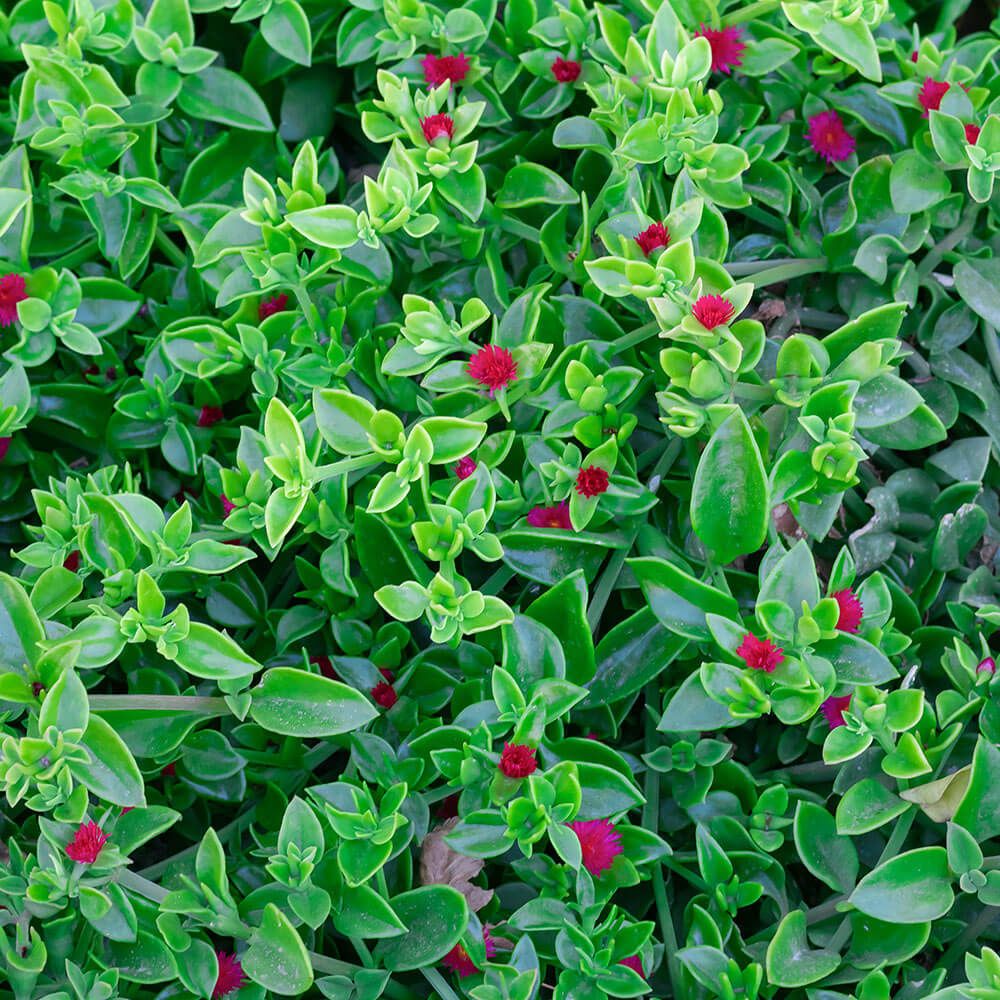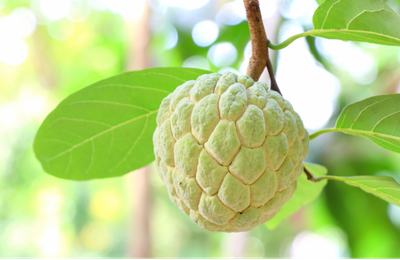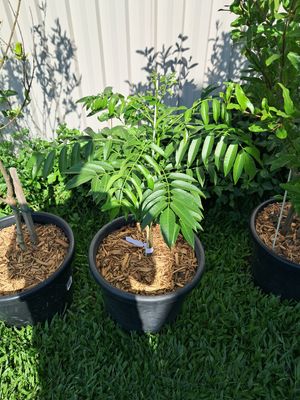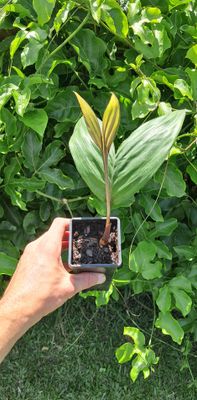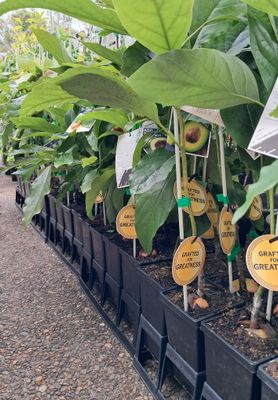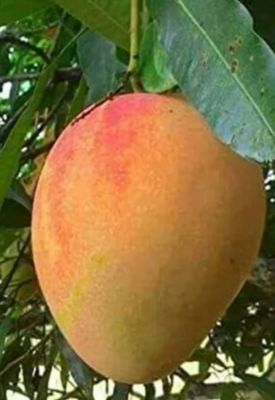Benefits of Using Baby Sunrose Under Fruit Trees
Using a living groundcover like Baby Sunrose under fruit trees offers a number of potential advantages, along with a few caveats to watch. Below is a breakdown.
Benefits
- Weed suppression
Because Aptenia forms a dense, matlike carpet, it shades the soil surface, reducing light reaching weed seeds and thus helping suppress competing weeds. Nurseries Online Australia+3The Diggers Club+3Garden Express+3 - Soil protection & reduced erosion
The foliage helps cover bare soil, reducing surface erosion from rain, splashing, and wind. Helps prevent surface crusting. - Moisture retention & microclimate moderation
Groundcover helps reduce evaporation from the soil surface, moderates temperature fluctuations, and maintains slightly better moisture conditions around the root zone. - Aesthetic appeal & flowering
Its flowers add color and visual appeal around the base of the trees. This can make your orchard or garden more attractive and less “bare.” - Low maintenance / drought tolerance
Once established, it is relatively hardy, needing minimal care, especially in drier seasons, making it a low-effort groundcover choice. - Beneficial insect attraction (possibly)
Flowering groundcovers sometimes attract pollinators or beneficial insects, which can indirectly benefit your fruit trees. (Though the degree of benefit from Aptenia in this way depends on your local insect fauna.)
Considerations & Potential Drawbacks
- Competition for water / nutrients
Though it’s low-growing, any groundcover has the potential to compete with tree roots. This is more of a concern in very dry soil conditions or in young trees. Monitoring water availability is key. - Shade tolerance
Under dense tree canopies (low light), its vigor and flowering will decline. It needs at least partial light to perform well. - Invasive potential
In favourable conditions (warm climates, good soils), Aptenia can spread vigorously and outcompete other desirable understorey plants. Some sources warn that it can smother native ground covers or become weedy. - Root zones / trunk clearance
You’ll want to avoid planting right up against the tree trunk (to reduce risk of rot, pests, disease entry, or trunk damage). Leave a buffer zone. Many guides for underplanting trees recommend keeping groundcover or other plants some distance from the trunk. - Maintenance / control
Occasional trimming, dividing or edge control might be needed to keep it from encroaching excessively or climbing up trunks or into areas you don’t want it. - Poor performance in waterlogged soils
If drainage is poor, it may suffer root rot or decline.
Best Practices When Using Under Fruit Trees
To get the benefits and mitigate risks, here are some practical tips:
- Plant at the edge of the dripline or outer canopy
Rather than right at the trunk, focus on areas under the outer portions of the canopy, where light still reaches and competition is lower. - Leave trunk clearance
Leave a bare ring (say 20–30 cm or more, depending on tree size) around the base of the trunk to reduce risk of moisture trapping, disease, and allowing trunk access. - Ensure good drainage
If your soil is heavy, consider amending with coarse sand, gravel, or organic matter to improve drainage, or use raised berms under which the groundcover is planted. - Monitor soil moisture
Especially in dry spells, ensure the trees get enough water. The groundcover should not deprive them; supplementary watering may be needed. - Occasional pruning / edge control
Trim back where necessary to keep pathways clear or prevent climbing into tree trunks. - Observe over seasons
Watch how the cover behaves over different seasons. In very wet or very shaded periods, it may decline, and you might need to supplement with other groundcover or mulches. - Combine with organic mulch if needed
In spots where the groundcover is weak (deep shade), you may need to supplement with organic mulch (wood chips, leaf litter) to maintain soil cover and moisture.
Suitability Under Fruit Trees in Brisbane / Subtropical Conditions
Given your location (Brisbane, Queensland, Australia), here are specific considerations:
- The climate is generally warm, and periods of dry stress or high heat may occur, which suits a drought-tolerant plant like Aptenia.
- However, heavy rainfall or poor drainage (especially in wet seasons) may challenge this plant. Ensure drainage is good.
- The light environment under taller fruit trees can be variable. In dense shade, Aptenia may struggle, so mapping light availability is important.
- The risk of invasive spreading may be higher; be ready to keep it in check.
If you like, I can run a simulation or comparative analysis (e.g. how Aptenia compares to other groundcovers under fruit trees in Brisbane) and give you a planting plan. Would you like me to do that for your specific orchard layout or tree types?
